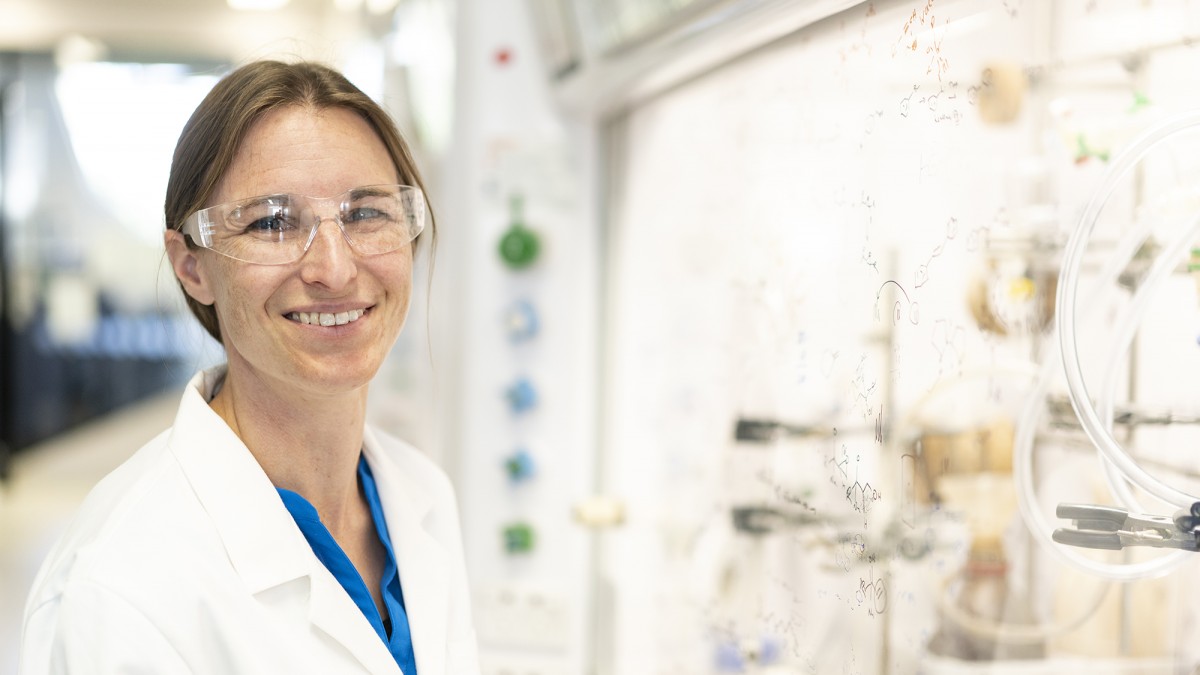Fighting antibiotic resistance takes guts
If you want to fight antibiotic resistance, you don’t have to know how to build a Death Star out of Lego, but it does help.
“When I was a kid, I really enjoyed building things with Lego,” says ANU chemist Dr Lara Malins.
“If you buy a Lego set, there is a picture on the box, and instructions of how to use the pieces to build what’s on the box, be it a Millennium Falcon or a castle.
“But I never wanted to build what was on the box.”
Dr Malins is now executing her Lego skills at the ANU Research School of Chemistry, where she pulls apart complex molecules and puts them back together again in new ways.
This out-of-the-box thinking has led Dr Malins to a prestigious Westpac Research Fellowship, with funding to help fight antibiotic resistance by developing new drug leads from the molecules found in your gut.
Antibiotic resistance is one of the biggest threats to global health, food security and development; but Dr Malins says fighting this “slow ticking time bomb” isn’t necessarily seen as a priority.
Antibiotics are so ingrained in modern disease control, it is hard to imagine a world without effective treatment against deadly infections like pneumonia and tuberculosis.
“A study published recently estimated that by 2050, the global financial cost of antibiotic resistance will be in the trillions of dollars,” says Dr Malins.
“Yet, antibiotic resistance doesn’t have the same urgency as something like COVID. People tend to think of it as the future’s problem.”
Our own Sir Howard Florey was awarded a Nobel Prize in 1945 for his role in developing penicillin as a treatment against infectious diseases. His work helped bring in a new era of medicine, saving an estimated 200 million lives.
Dr Malins says the history of penicillin, is a great example of our current tools in fighting antibiotic resistance. Because, despite penicillin being so effective, bacteria quickly develop a resistance to it.
“Once we understood the chemical structure of penicillin, synthetic chemists could overcome resistance by making small changes to the drug.
“But eventually, resistance develops again, and we are stuck with the same template of amending antibiotics already in use.”
Dr Malins and her team want to break this cycle by starting again with antibiotics from an unlikely source: your gut.
“If we modify a template that already exists in your body, it’s already compatible with everything a healthy body encounters. And perhaps we can circumvent the cycle of resistance.”
Dr Malins’ face lights up when she starts talking about the diverse community of helpful microorganisms living inside your intestinal track, known as the gut microbiome.
“The molecules that these bacteria produce are amazing,” she says. “The bacteria in your gut can piece together the building blocks of chemicals in really interesting ways. As a chemist, it’s like getting a shiny box of new Legos.”
Not wanting to build what is on the box, Dr Malins and her team are excited by the possibility of supercharging the ability for antibiotics from your gut to fight disease.
“We are inspired by nature’s design but will make a few little modifications here or there, that help improve the biological activity of the molecule,” she says.
“Maybe a molecule is a great antibiotic, but the side effects make you feel awful. By making small changes to the structure, sometimes you can fine-tune the properties of the molecule, making it a better drug or better therapy.”
Aside from the funding to acquire new chemical Lego bricks, Dr Malins is looking forward to some of the other valuable benefits that a Westpac Research Fellowship brings, such as being part of a diverse community of fellows.
“The people Westpac are looking to target, are early career academics that they hope are going to shake things up. So the opportunity to network with this group is really exciting.”
Whatever the outcomes of her research, Dr Malins wants to change the world for the better.
“I see my role as being unique because from an industrial perspective, antibiotic science is not very profitable,” she says. “But academia can fill that important gap, and develop new chemical tools and technologies outside of financial incentives.”
Hopefully, just like penicillin, these new chemical Lego kits will save many lives too.


